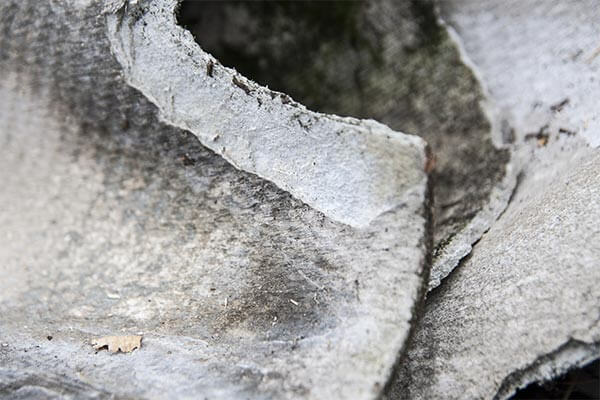How to Tell the Difference Between Cellulose and Asbestos Insulation
Everything you need to know How to Tell the Difference Between Cellulose and Asbestos Insulation.
In this comprehensive post, we'll go over;
- Asbestos Insulation
- Vermiculite Insulation.
- Creating cleaning mixtures.
- Cellulose Insulation.
- Common Insulation Questions.
If you've ever asked yourself about asbestos and cellulose insulation, you'll love this post!

Asbestos and Cellulose Insulation
Before 1980, asbestos was widely used as an insulation and fire retardant product for both homes and commercial buildings. It wasn’t until after many years of use that the health effects (lung cancer, mesothelioma)were discovered to be related to asbestos material use.
Since 1973, the EPA has been working to ban the mining, manufacturing, and distribution of materials including asbestos. For those who aren’t aware, asbestos fibers are a natural mineral and are great at slowing the transfer of heat, hence the use as insulation. Keep reading to continue learning about asbestos and cellulose insulation.
What Does Asbestos Insulation Look Like?
Depending on what type of insulation is being used, the look and texture of it may vary. There are 4 main categories of asbestos insulation: loose-fill, wrap, block, and spray-on. See below the differences between each type of asbestos insulation.

Loose-Fill Insulation
This type of insulation containing asbestos is almost entirely made out of harmful minerals. Made to be used as a pour-in or blown-in type of insulation, the fibers are loose and fluffy. Since this type of insulation is mostly of asbestos fibers, it is extremely harmful when breathed in. One must be careful with this type because just a little waft of air can cause the fibers to move about.

Asbestos Wrapping
This type of insulation comes in the form of a wrap, or outside covering mostly used for pipes and ductwork. When looking at this pipe insulation, it may look like cardboard, however, as it gets older it breaks up into harmful dust particles.

Asbestos Blocks
These blocks would look similar to pieces of styrofoam, but they would be nearly 100% asbestos material. These blocks would be placed and glued to walls and used as an insulator. Anytime these materials would be cut, harmful dust is released into the air causing health issues.

Spray-On Insulation
Making up around 85% of the mixture, spray-on asbestos can be sprayed onto ceilings and pipes. This material most often will look grey and powdery and can release a large plume of dust if damaged.
*Did you know that there are 6 types of asbestos?
Common Questions, Answered
Does pink insulation have asbestos?
That bright pink insulation we commonly see in homes today (you know, the itchy kind that has a paper on the back and comes in big rolls) is made out of fiberglass. This type of insulation does not contain asbestos materials, just tiny microscopic pieces of glass.
This type of insulation can also be used as blown-in insulation. The misconception that this material is made of asbestos is because the glass particles can also cause a reaction when touched or breathed in, however, there are no lasting effects from the fiberglass.
This brings us to our next question,
Is asbestos insulation yellow?
Similar to the pink insulation, the color, in this case, does not mean it is made of asbestos. Yellow insulation is the generic color for fiberglass insulation. Used to fill wall cavities, this material does not contain harmful asbestos fibers
Our last common question answered…
What is Vermiculite Insulation?
Vermiculite, like asbestos, is another naturally occurring mineral that was mined to be used as insulation. While vermiculite is not harmful, it is often contaminated with asbestos materials making it a harmful substance. It should always be assumed that if there is vermiculite insulation in older homes or buildings, that there is also asbestos.
The mine where 70% of vermiculite material was mined also had a deposit of asbestos, which likely contaminated the material. This type of insulation has different features but commonly looks like small pebbles or particles.
Cellulose Insulation

Paper-based cellulose insulation is manufactured with mostly old newspaper and sometimes denim materials. Once the paper material is treated with chemicals, it becomes fire retardant and the risk of pests is reduced. This type of insulation can be used in 2 different ways, as loose-fill or as blown-in insulation.
Wet-Spray Cellulose - Used as the blown-in method, a fine mist of water is added to the hose that allows for better heat retention and better noise reduction. This method is often used during new construction before drywall is put up.
Dry Cellulose - Can be used with either the blown-in or the loose-fill methods. When the dry materials are packed tightly, the noise levels can be reduced as well as better heat retention. When the dry insulation is blown in, it can get into small spaces better than if it was just filled in regularly.
Cellulose insulation is a common alternative to fiberglass insulation as it does not cause harmful side effects, and it is also environmentally friendly. Additionally, the costs are much lower than other insulation materials, and can even be done yourself.
Call a Professional
If you are worried about the materials in your home, a professional at Rock Environmental can help find asbestos materials. Additionally, all team members have been fully IICRC trained in the proper asbestos removal techniques that will keep you, your home, and the environment safe from exposure.
Call Rock Environmental at 585-340-6799, or click the button below! We are available 24/7/365.
Share this Post
